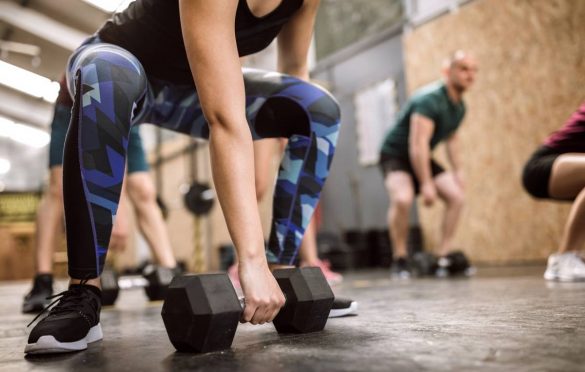Why Contralateral Exercises? What are they?

Table of Contents
By Landon Smith
Having gone through the latest blogs on the basics of nutrition and supplementation, we are stepping away from the practice area of this blog, specifically, why we are doing contralateral exercises.
The Incredible Contractual Exercises
A contralateral exercise is any exercise in which resistance comes from the opposite side of the working limb. If you are doing small group training, you probably heard this weird vocabulary that we use to make coaches seem bright. If you are primarily a team training client, you know it gets tough when you see the letters CL before an exercise. But why prepares “CL” make things so much more complex, and why do we choose this variant of exercise so often? You’re going to want to keep something because I’m about to have a geek coach on you.
Contralateral exercises increase physical balance and awareness and thus create a more efficient and flexible musculoskeletal system
Contralateral movement increases nucleus activation and helps strengthen the nucleus in functional patterns
The Contralateral training has shown to increase muscle activation even in non-exercising limbs and reduce atrophy in restrained parts of the body.
Contralateral exercises put more stress on the nervous system and therefore perform with less weight, which resources that the joints are not unnecessarily strained.
Do You Need An Interruption?
This type of exercise not only improves your overall athletic ability and mobility but can also even help recovery and injury prevention. Contralateral exercises are one of the ultimate “bangs for your buck” moves that you can do in an exercise routine.
The subsequent time you hear “contralateral” or see the “CL” on an exercise card, hopefully, you will not occupy with fear or anxiety. After reading this, this word should make you feel warm and fuzzy deep down inside. Everything we do here has a reason and everything we do is for your benefit!
Even if you do only half of your workout, your whole body will benefit from the hormonal changes and even the neurological demands of the exercise. (Even visualization has a physiological effect.) Here are some contralateral motion combinations that you can use to work out effectively. Really under time pressure? Work one side in the morning and work the other side future in the day or even the afterwards day.
Lunge with shoulder press
Step onward with the right limb.
Push your left arm up near the ceiling.
When you’re ready, continue this movement by jumping forward into the lunge while pushing your left arm up toward the ceiling.
Curtsy lungs with dumbbell rows
Take a short lunge with your right leg forward.
Do a row of dumbbells with your left arm.
If you are ready, progress this movement by jumping sideways to the right while rowing with your left arm.
Also Read: What muscles do Incline Dumbbell Press work?
Push-Up with Dumbbell Triceps Kickback
Start on all fours with your right hand on the floor and hold a dumbbell in your left hand.
Perform a push-up with your right arm as you extend your lower left arm into a tricep bounce.
If you’re ready, progress through this movement by “falling to the floor” and catching up with your right hand while still doing a tricep bounce with your left forearm.
One-leg glute bridge with chest press with one-arm dumbbell
Lie down on the floor. Place your left knee and preserve your right leg straightforward
Hold a dumbbell in your left hand in a chest press place.
Push your hips near the ceiling with only your right foot while pushing the dumbbell with your left hand toward the ceiling.
If you are ready, progress through this movement by standing fully upright with your right leg only, still pushing the dumbbell to chest height.
Thanks for the interpretation, and if you have any other questions, you know where to find me.


